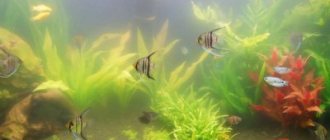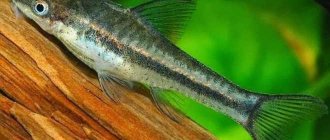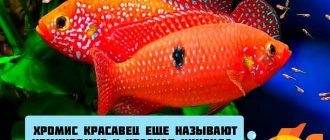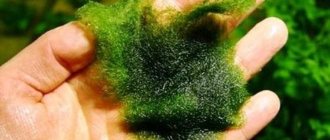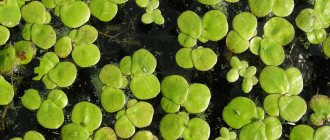What is a nematode
Nematodes are a type of roundworm and have a size not exceeding 2 mm. These creatures belong to protostomes, a taxon that is included in the moulting group. To date, zoologists have described and systematized over 24,000 species of parasitic nematodes, as well as their free-living varieties.
However, experts, based on the frequency of descriptions of new species, come to the conclusion that the approximate number of species of these worms is close to 1 million.
Did you know? Only the insect class includes more species than nematodes.
Main types
There are free-living roundworms and parasitic nematodes. Let's consider their features.
Regular
The favorite habitats of free-living roundworms are freshwater bodies of water, seas and soil. In such an environment, their density can reach 1 million/cubic meters. m, nematodes take an active part in the functioning of ecosystems.
Free-living roundworms do not pose a danger to living organisms; their lifespan is no more than a few days. They are extremely dependent on the availability of water; fluctuations in moisture concentration are fatal for them. Salty soils are also not suitable for them.
Parasitic
But parasites are extremely resilient. They tolerate any influence of an aggressive environment and unfavorable external factors. A special feature of worms is that during such periods of the life cycle their reproductive function is noticeably enhanced.
Read more about such disinfectants and cleaning agents for aquariums as Sidex and Methylene Blue.
In an aquarium, parasitic worms can quickly infect and soon destroy the entire population of fish and vegetation. Nematodes develop in several stages and can have two or more hosts: the larva parasitizes one living creature, the adult worm moves to another. As the parasite develops, it travels from one organ to another, leaving larvae there, thus infecting the entire body. Most of the representatives of the genus parasitize (or exist as commensals) on almost all types of living beings - from protozoa to humans.
Nematodes that parasitize plants cause nematode diseases, and living creatures develop nematodes. Nematode plant diseases affect the root system; invasive diseases pose a danger to living organisms. The most famous parasites of this type found in humans are pinworms, roundworms, and trichinella.
Important! Aquarium nematodes are not dangerous to humans. Changing the habitat for these worms is detrimental. A person can become infected with parasites only by eating raw fish or meat.
How to fight?
- If there are nematodes in the aquarium, increase water filtration and soil siphoning, and reduce the portion of food for fish and snails.
- Free-living nematodes are quite easy to control. Mollies and gouramis eat some types of worms and can wipe out a worm population in just 2-3 days. Coil snails willingly feast on uninvited guests.
1-Mollynesia; 2-Gourami.
- Worms are sensitive to increased temperature. Therefore, slightly heating the water by 2 °C helps get rid of the inhabitants. If the worms did not die, then we are not talking about nematodes, but about other types of parasites.
- Another easy way to get rid of small worms is to catch them using a small net.
There are more radical methods of struggle. Experienced aquarists share that it is possible to destroy the nematode population by heating the water to 40–45 °C. Before the procedure, fish and plants are removed from the aquarium. The decorations are removed, washed and disinfected. After the water has cooled to the required temperature, the plants and fish are returned to the tank. Heating the water even gets rid of individuals that have dug in in the ground or hidden behind rocks.
Scientists have found out that what is bad for fish is good for parasites. The worse the conditions in the aquarium, the more actively the worms reproduce. They are able to survive even in the complete absence of oxygen. But without moisture they die. The most difficult thing to combat is parasitic nematodes.
Treatment of fish
Before treatment, the aquarium is cleaned of organic debris and feces. This will avoid secondary infection. Sick fish are quarantined.
Two drugs are used to treat fish for roundworms:
Levamisole
The drug is used as an additive to food and for bathing. Dosage - 4 g per 1 kg of feed once a week for a course of 3 weeks. For the bath, the drug is diluted at 2 mg/l and treated for 24 hours. Treatment is repeated after 2–3 weeks.
Fenbendazole
The product is used only as an additive to feed. The drug is used in a dosage of 2.53 g per 1 kg of feed every 3 days. Repeated treatment is carried out after 14–21 days.
Other anthelmintic drugs are also used against worms:
Tetra Medica CestoNemaEx
(diflubenzuron) Dosage - 20 ml. at 400 l. water.
Sera Med Professional Nematol
Dosage - 10 ml. at 400 l. water.
JBL Nemol
(benzimidazole) Dosage - 100 ml. at 400 l. water.
These drugs have a wide spectrum of action and can be used to combat other worms.
The most difficult thing to treat is fish in which it is not the gastrointestinal tract that is infected, but other organs. Often the only treatment for extraintestinal forms of helminthic infestation is surgery. Therefore, infected fish are usually discarded.
Nematodes: how to get rid of parasites
Small white worms can be found on the glass of the aquarium, especially near the stream coming from the filter. Nematodes are not dangerous, but other species are not so harmless.
To find out the type of worms that have chosen your aquarium, you can carry out a simple manipulation: raise the water temperature by 2-3 degrees and increase the salinity. Such measures will not cause any harm to the aquarium fauna, but are guaranteed to destroy nematodes. If the operation is unsuccessful, it means that another parasite has appeared in your aquarium.
Did you know? Nematodes appeared on the planet about 300 million years ago.
Priority measures
If you find white worms in your aquarium, you should take a number of immediate measures:
- It may happen that one infected fish infects the entire population. At the initial stage, it is extremely difficult, almost impossible, to identify that a fish is a carrier of the parasite. The only difference from its healthy counterparts is that this fish eats more, but you are unlikely to be able to notice this circumstance. When the parasite takes hold in the fish’s body and begins to grow, its behavior changes: it becomes lethargic and inactive. Her belly is getting bigger. Such fish should be quarantined. Plants and aquarium animals purchased in a store are also quarantined before being introduced into the aquarium.
- It is advisable to remove the planaria as soon as possible, but this is quite difficult to do. These worms live in the ground, and they may only be discovered when the population grows to enormous proportions.
- You can try to make traps: wrap a piece of meat in gauze, tie it and place it in the aquarium at night. Before doing this, blow the soil so that the planaria rise to the upper layers of water. The next day, remove the trap along with the worms caught in it. This method cannot be classified as radical; in this way, only part of the parasites can be removed. It is also worth saying that many professional aquarists consider this method not only ineffective, but also to some extent harmful, since meat only further pollutes the aquarium.
- Turbellaria can live on the walls of the aquarium. They do not pose a danger to the fish, but glass covered with white worms does not look attractive. In this case, all the inhabitants of the aquarium are removed, the glass is cleaned, and the water is heated to +37 ° C and kept for 5–7 hours at this temperature. Then the water is cleaned, filtered and, after the temperature becomes favorable, the animals are released back.
- As was said, one of the reasons for the appearance of nematodes may be an excess of feed, more precisely, its rotting remains. Try changing the filter operating mode to a more powerful one, give the fish less food. Introducing labyrinthine species (gourami, macropods, cockerels) into the aquarium will also help; the problem is that many crabapples are quite unfriendly with other species.
- You can get rid of hydra only by restarting the aquarium, having previously disinfected it. It is useless to remove parasites, filter water or clean an aquarium in which hydras live, but you can introduce living creatures into it that eat hydras: mollies, gourami, pond snails.
- If there is no vegetation in your aquarium, it is enough to remove the fish and heat the water to +42 °C. This temperature should be maintained for 2.5 hours.
Anthelmintics
If the above measures did not help and you decide to resort to pharmacological agents, you should pay attention to the following drugs:
- Fenbendazole is a drug that quite effectively destroys parasites;
- Medica CestoNemaEx is a drug for the destruction of nematodes, tapeworms, carp lice and parasitic crustaceans. Suitable for aquariums with tropical fish. The packaging is designed for 400 liters of water;
- Sera Med Professional Nematol - destroys any types of nematodes living in the aquarium;
- Nemol is a remedy for the destruction of hairworms and roundworms. Suitable for both fresh and salt water;
- No-Planaria is a product for cats and dogs, also suitable for aquariums. 1 tablet is suitable for approximately 60 liters of water.
All medications should be used according to the instructions.
How to get rid of white worms in your aquarium
Do not overfeed the fish. Too much food that fills the space of the aquarium leads to environmental pollution, which has a beneficial effect on the development of various types of bacteria, including worms. The problem is that the filter will not cope with cleaning, the food will begin to settle on the algae and the bottom of the aquarium, and as it decomposes it will attract bacteria, which will begin to multiply at a rapid pace. If the worms have already appeared, this means that you are really feeding your fish too often and too much. Try reducing the amount of food and see if the parasite volume decreases.
Nematodes as food: breeding and growing methods
Nematodes are a favorite treat for many aquarium fish. In order to breed and raise worms for food, they use various containers with a shape similar to wide, shallow plates. The procedure does not cause any difficulties and is carried out as follows:
- The bottom of the container is lined with food (layer thickness - 15–20 mm).
- Place a piece of the old culture on the layer of food (if you have already grown this type of biofeed before) or a starter culture purchased at a pet store.
- Glass with a piece of foam rubber glued inside is placed on the container, which must be periodically moistened (if the container is hermetically sealed, foam rubber is not needed).
The following foods are used as a nutrient medium for breeding roundworms:
- porridge based on oats, barley or oatmeal flour, with a small amount of milk;
- oatmeal flour with grated carrots, scalded with boiling water, with the addition of multivitamins;
- thick oatmeal;
- bread soaked in milk;
- white bread (without crust), poured boiling water, squeezed out and cooled;
- finely grated carrots, brewed with boiling water (the root vegetable processed in this way can be added to other types of food);
- thick curdled milk.
Important! All feed for breeding nematodes should have the consistency of thick porridge. In a liquid environment, the larvae may die. The cultivator is installed in a dark place with an air temperature of +22…+28 °C. After 48–96 hours, the roundworms will begin to actively reproduce.
To collect biofeed, a smooth object (domino, piece of plastic, etc.) is placed on the nutrient medium, which will soon be covered with young worms. Harvesting is carried out using a brush, which after the procedure should be rinsed in a container with clean water. When the nematodes settle to the bottom, the cloudy water is drained. Do this several times until the water becomes clear.
It may happen that the worms themselves try to crawl out of the cultivator along the walls, in which case it is enough to collect them with a brush and rinse the brush in the aquarium.
In the aquatic environment, nematodes live for approximately 48 hours. Since the worms settle on the ground, the water should be stirred up periodically; some fry will not eat food lying on the bottom.
Not all fish eat nematodes, but vinegar eels mixed with carrots are happily consumed by any fish. The grated carrots are placed in a cultivator, and the crop is laid on top of it. In such an environment, fairly rapid reproduction occurs and a carrot-colored nematode appears, which fish readily eat.
Video: Breeding nematodes at home If, when breeding roundworms, you notice an unpleasant odor or the nutrient medium begins to change color, change the container and start the culture again. If the nutrient medium becomes too liquid, add oatmeal to it until the desired consistency is obtained.
Did you know? The nematode Halicephalobus mephisto lives in the earth's crust at such a depth that no other multicellular creature living on our planet descends.
